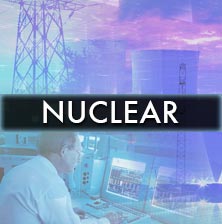The following is a small selection of items recently published by EPRI. To view complete lists of your company-funded research reports, updates, software, training announcements, and other program deliverables, log in at www.epri.com and go to Program Cockpits.

Arizona Public Service (APS) recently deployed utility-owned solar arrays equipped with smart inverters on 1,600 residential rooftops, integrating them with a central control system. EPRI and APS are assessing the inverters’ performance to help provide the electric power industry with best practices. This report discusses insights in several research areas including: impacts of distributed solar on peak load; ability of inverters to increase the amount of solar a feeder can accommodate; and bandwidth and data transfer requirements for inverters.

For more than 200 years, battery technology has advanced in waves. In 1800, Alessandro Volta invented the first battery providing continuous current. In 1859, Gaston Planté invented the lead acid battery, establishing a chemistry that dominated the commercial and industrial battery market for 150 years. In the 1960s and 1970s, NASA-funded research unleashed a new wave of electrochemical innovation. In 1991, Sony introduced the first commercial lithium ion battery, and the technology’s costs and performance have improved over the past 25 years as commercial giants LG, Samsung, Sony, Panasonic, and Tesla scaled up manufacturing.
Lithium ion dominates consumer electronics and electric vehicles, and Navigant Research reports that these batteries remain the leading form of energy storage for new projects worldwide—accounting for 83% of newly announced systems through the third quarter of 2016.
The growing need for grid storage to support solar and wind is providing energy to create a new wave of battery innovation.
“With more technologies such as sodium ion and [TBS_POPOVER placement="bottom" title="Flow Batteries" content="In flow batteries, one or both active materials are in solution in the electrolyte at all times." class="card"]flow batteries[/TBS_POPOVER] entering the picture, the big question for researchers and the electricity industry is, will the next generation include technologies other than lithium ion?” said Brittany Westlake, energy scientist in EPRI’s energy storage and distributed generation program. “The answer will vary depending on the application.”
In mobile battery applications such as electric vehicles, high [TBS_POPOVER placement="bottom" title="Energy Density" content="The amount of energy that a battery can store per unit of mass or volume." class="card"]energy density[/TBS_POPOVER] is critical. For stationary applications such as substations, cost, [TBS_POPOVER placement="bottom" title="Cycle Life" content="The number of charge-discharge cycles after which electricity storage becomes inoperable or unusable for a given application." class="card"]cycle life[/TBS_POPOVER], and [TBS_POPOVER placement="bottom" title="Duration" content="The amount of time that a storage device can be discharged at the nominal power rating" class="card"]duration[/TBS_POPOVER] are paramount.
Sodium ion batteries are similar to their lithium ion counterparts, but sodium ions replace the transport charge. In the battery’s discharge mode, electrons stripped from sodium atoms move through an external circuit to produce energy, while positive sodium ions are shuttled from the [TBS_POPOVER placement="bottom" title="Anode" content="A battery’s positively charged electrode." class="card"]anode[/TBS_POPOVER] to the [TBS_POPOVER placement="bottom" title="Cathode" content="A battery’s negatively charged electrode." class="card"]cathode[/TBS_POPOVER], where they are intercalated (lodged) in the lattice structure.
“Think of intercalation as stuffing ping pong balls into spaced layers of chicken wire,” said Westlake.
The key advantages of sodium ion: Sodium is more naturally abundant, and the aqueous electrolyte (such as salt water) is safer. Because lithium is highly reactive with water, organic electrolytes must be used, and the batteries must be carefully packaged to prevent electrolyte evaporation and possible short circuit.
The disadvantage: Sodium ion batteries are 25% larger and much heavier, which can result in longer charge and discharge times, as well as a lower energy and [TBS_POPOVER placement="bottom" title="Power density" content="Amount of power a battery can produce per unit of mass or volume." class="card"]power density[/TBS_POPOVER]. “Sodium ion batteries may not be the best choice to replace lithium ion in electric vehicles,” said Westlake. “But it could be competitive in stationary applications such as substations and remote grid-scale storage where weight and battery footprint are less important.”
Several sodium ion start-up companies have entered the race for stationary battery markets. One of them, Alveo, emerged from Stanford University a few years ago. “There are a number of competitive cell chemistries in the stationary battery market,” said Alveo Chief Executive Officer Colin Wessells. “Lead-acid, the current workhorse, is the cheapest but has a relatively short cycle life. Lithium ion has a good cycle life and costs are falling, but total costs for installed systems are still about $600 per kilowatt-hour.”
Alveo and others are targeting markets in which they have a performance or economic advantage. They focus technology development on creating a battery with high power and long cycle life at a lower cost. Alveo is about a year away from sending out demonstration packages to interested parties.
Aquion, a sodium-ion startup out of Carnegie Mellon University, is focusing its products on long-duration storage for solar applications, providing cycles of 4 to more than 20 hours.
Flow batteries operate much like [TBS_POPOVER placement="bottom" title="Fuel Cell" content="A fuel cell is a device that reacts hydrogen ions with oxygen to convert a fuel into electricity." class="card"]fuel cells[/TBS_POPOVER]: Two different electrolytes are pumped from separate tanks through a stack of electrochemical reaction cells to generate electricity. Enlarging the tanks prolongs the duration of the battery’s energy output (kilowatt-hours) while enlarging the reaction cells increases the power output (kilowatts).
“One of the strengths of flow batteries is that they enable independent adjustments to energy and power, so that you can tailor the system design to your needs,” said Westlake.
A 2015 EPRI survey of 20 commercial flow battery companies provides a snapshot of the market, including information on chemistry and products. According to the study, all-vanadium and zinc bromide chemistries account for the most commercially available products, with system power averaging 763 kilowatts and 1507 kilowatts, respectively. The most economic application of flow batteries is for daily discharging of 4 or more hours.
Pacific Northwest National Laboratories (PNNL) has pioneered flow battery technology, and three companies have licensed its vanadium battery design, which increased storage capacity by 70%. PNNL is developing an organic-aqueous flow battery with the potential to produce energy at $180 per kilowatt-hour, 60% less than the cost for vanadium flow batteries.
“We’re in a battery chemistry renaissance,” said Wessells. “There are many more new technologies being commercialized than you would have imagined 10 years ago. Most are not going to work out, but it is good for the industry that so many things are being attempted.”
Brittany Westlake

This presentation explores the potential impacts of variable renewable energy on coal and natural gas generation in the Northwest-Central region of the United States. It is based on analysis with EPRI’s U.S. Regional Economy, Greenhouse Gas, and Energy model.

Advanced ultrasupercritical coal-fired power plants operate at high temperatures and pressures, increasing plant efficiency but requiring the use of expensive advanced materials with high-temperature resistance and strength such as nickel alloys. Innovative arrangement of plant components can minimize use of these alloys and decrease costs. This study examined the performance and economics of three different arrangements.

Flash thermography—a nondestructive evaluation technique that can rapidly detect defects in components—is limited in its ability to quantify defect size, depth, and severity. In this project, researchers developed a code that enables users to analyze video from flash thermography to characterize defects. The code has the potential to reduce costs for inspection of power plant components.

Cathodic protection systems are necessary to maintain the integrity of buried piping systems in nuclear power plants. This study examined whether alternative methods for attaching electrical connections in cathodic protection systems (thermite welding and pin brazing) could yield the same quality as traditional installation at lower cost.

In this study, researchers developed and tested an experimental bend technique to better understand the mechanisms of irradiation-assisted stress corrosion cracking in austenitic steels in light water reactor core components.

Crud (radioactive deposits on nuclear fuel rods) can increase the risk of fuel failures in boiling water nuclear reactors. This study demonstrated the deposition of crud in laboratory-simulated nuclear plant operating conditions, with an objective to better understand the effects of different elements (such as zinc, copper, and silicon) on crud structure and to confirm that EPRI’s water chemistry guidelines are sufficiently robust to prevent crud-related fuel failures.

Chemical cleanings are performed to remove deposits in boilers and evaporators in heat recovery steam generators in fossil power plants. This report examines potential treatment techniques for processing wastes generated during chemical cleaning.

BORAL® is a ceramic-metal material commonly used as a neutron absorber in spent fuel pools in nuclear plants. To assess whether degradation of these panels presents safety concerns, this study examined the condition of BORAL® neutron absorber panels used for 20 years in the spent fuel pool of the decommissioned Zion Nuclear Power Station.

This report discusses the results of adult and juvenile fish surveys, habitat evaluations, and water quality studies in the Ohio River, with an objective of investigating possible effects of power plant thermal effluents on fish.

Prompted by recent major failures at coal combustion residual impoundments, this study examined U.S. Environmental Protection Agency data on more than 400 impoundments to assess the possible causes of failures.